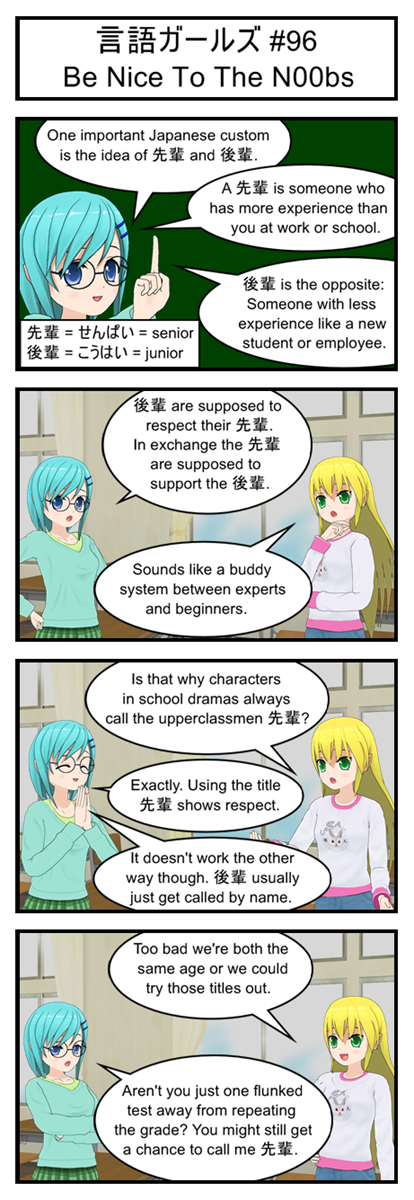
This is another great example of how important hierarchy is to Japanese culture. Even when people are all at the same social level (like a group of employees with similar jobs) there are still rules stating that some people get to be “senpai” and other have to be “kouhai” complete with special rules about how to properly treat each other.
Interesting kanji trivia: “senpai” has the symbol for “before (先)” and “kouhai” has the symbol for “after (後)”. Translated literally they more or less just mean “the people who came before the other people” and the “people who came later”.
Vocabulary
先輩 = せんぱい = senior
後輩 = こうはい = junior
Transcript
言語ガールズ #96
Be Nice To The N00bs
Blue: One important Japanese social custom is the idea of 先輩 and 後輩.
Blue: A 先輩 is someone who has more experience than you at work or school.
Blue: 後輩 is the opposite: someone with less experience like a new student or new employee.
Blue: 後輩 are supposed to respect their 先輩. In exchange the 先輩 are supposed to support the 後輩.
Yellow: Sounds like a buddy system between experts and beginners.
Yellow: Is that why characters in school dramas always call the upperclassmen 先輩?
Blue: Exactly. Using the title 先輩 shows respect.
Blue: It doesn’t work the other way though. 後輩 usually just get called by name.
Yellow: Too bad we’re both the same age or we could try those titles out.
Blue: Aren’t you just one flunked test away from repeating the grade? You might still get a chance to call me 先輩 after all.